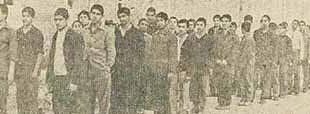The Defection: A Calculated Act of Betrayal
The story begins with Capt. Ahmad Moradi, an accomplished pilot entrusted with flying an F-14 Tomcat. Unknown to his peers and superiors, Moradi had been in contact with Iraqi intelligence, planning his defection for months. On the fateful day of his betrayal, Moradi took off on what was supposed to be a routine mission. Unbeknownst to his co-pilot, Capt. Najafi, Moradi intended to cross the border into Iraq and deliver the Tomcat into enemy hands.
As they approached the Iraqi border, Capt. Najafi realized Moradi’s intentions. Horrified, Najafi considered ejecting from the aircraft. However, the F-14’s speed and altitude, combined with radar control restrictions, made ejecting too dangerous. Najafi was forced to remain in the rear cabin, a helpless witness to Moradi’s treachery.
The Race to Intervene: A Missed Opportunity
The Iranian Air Force quickly detected the rogue F-14 on radar. Scramble jets from the Shahrokhi Air Base in Hamedan were dispatched to intercept Moradi and prevent him from crossing the border. However, time was not on their side. Despite their best efforts, Moradi’s plane was escorted by Iraqi interceptors as it descended onto Iraqi soil.
This event was a devastating blow to Iran’s Air Force. The F-14 Tomcat was not only an expensive asset but also a symbol of technological superiority. Its defection posed a significant threat, as the advanced technology onboard could now potentially fall into enemy hands.

